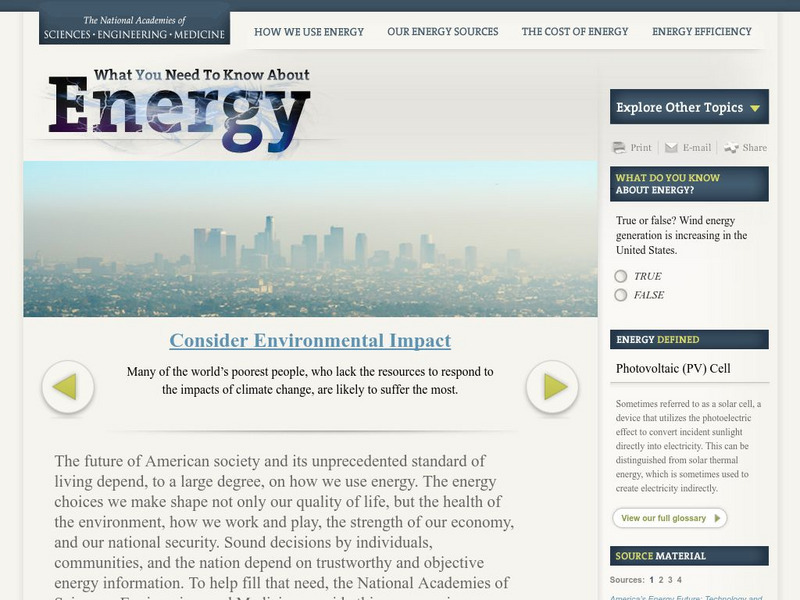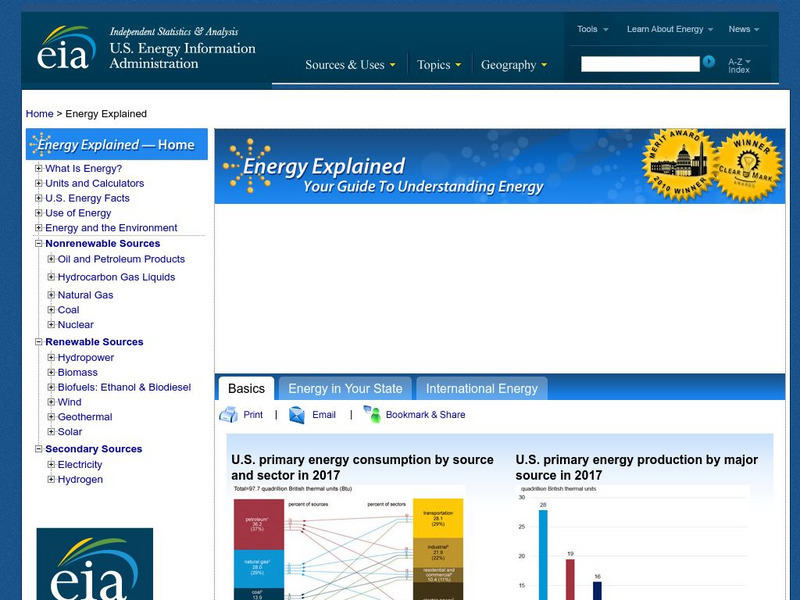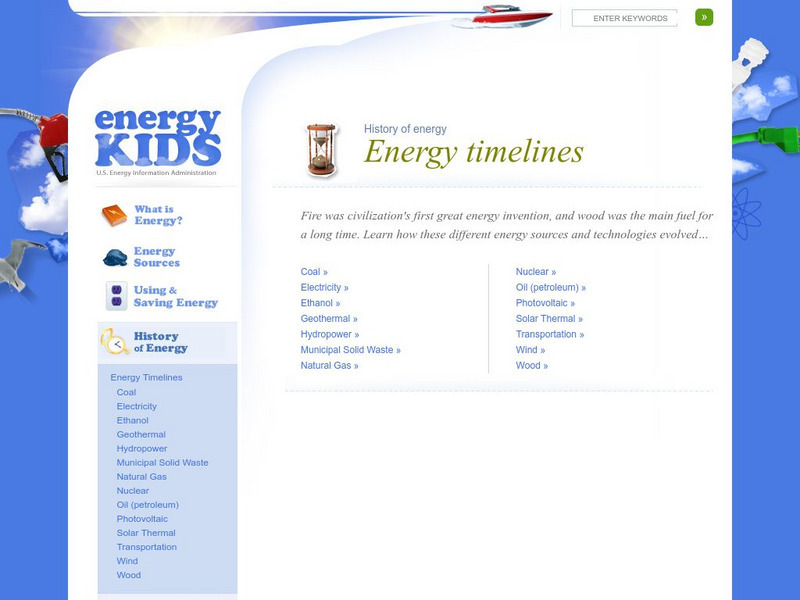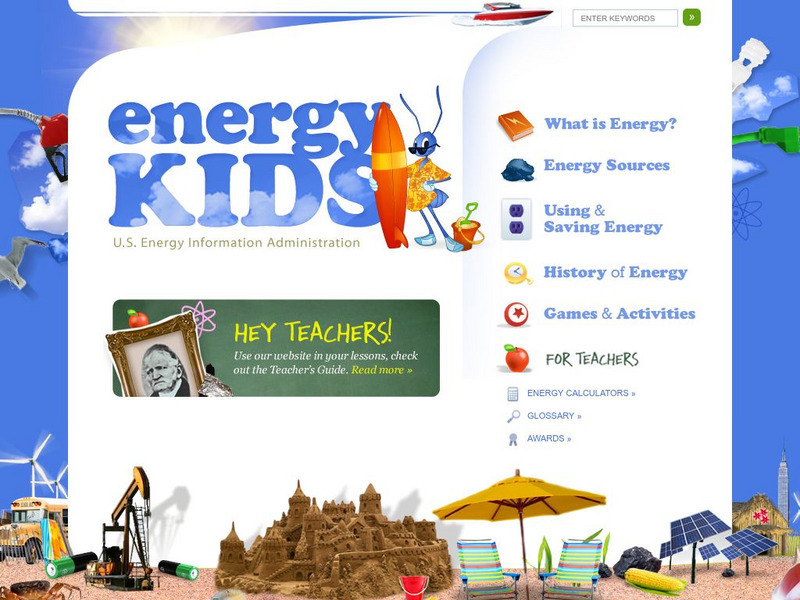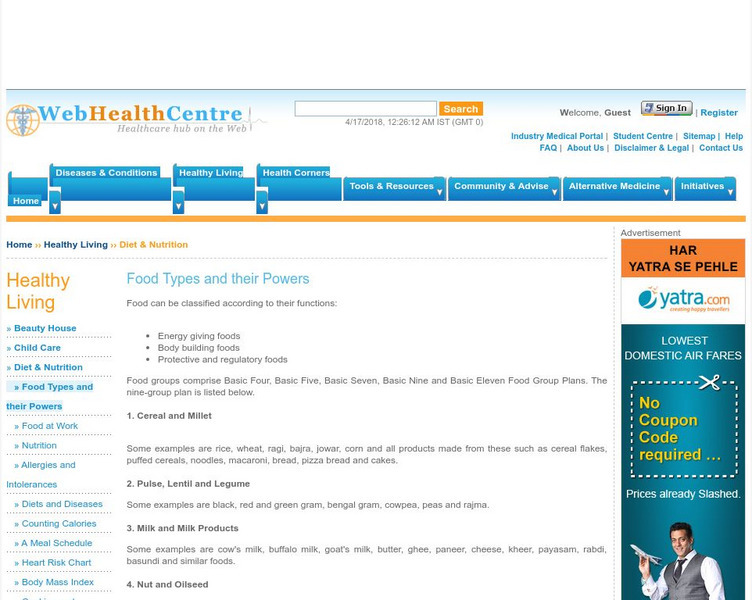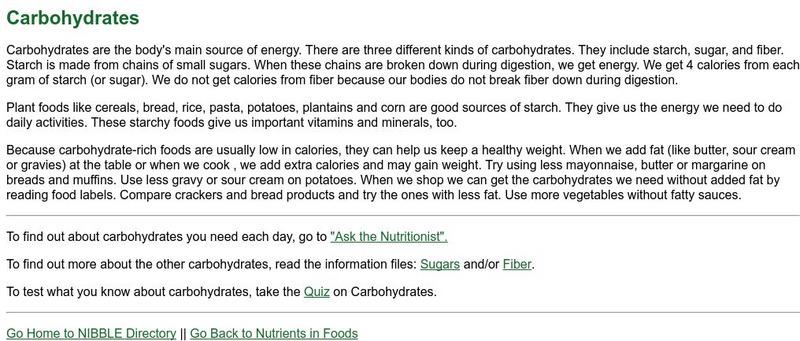American Museum of Natural History
What is the Greenhouse Effect?
Without the greenhouse effect, Earth would not be inhabitable. A thorough online resource describes the greenhouse effect and how it occurs. The source highlights the different types of gases that work together to absorb the sun's...
National Academies of Sciences, Engineering, and Medicine
The National Academies: Our Energy System
This interactive presents the many sources of energy in the United States, showing in a flow chart how much of each type of energy is used. Pop-up windows provide more information at the different branches in the chart.
US Energy Information Administration
U.s. Eia Energy Kids: Energy Explained
A comprehensive source of information about energy in all its forms. Each type of energy is explained, along with information about its environmental impact, supported with graphs, charts, and other data. There is a twenty-question quiz...
US Energy Information Administration
U.s. Eia Energy Kids: Energy Timelines
Research different types of fuel to see when major developments occured in their use. Fourteen different types of fuels can be researched, including fossil fuels and alternative fuels.
Canada Science and Technology Museum
Canada Science and Technology Museum: Background Information for Energy
Energy! What do you know about it? Use this terrific site to find out everything about it through a series of Q&As. Educators will find useful lesson plans at the related Teacher's site.
US Energy Information Administration
U.s. Eia Energy Kids
This extensive resource provides information on renewable energy, nonrenewable energy and energy conservation.
Other
Web Health Centre: Food Types and Their Powers
This website describes the nutritional values of different types of foods. Learn what types of foods are sources of carbohydrates, proteins, fats, vitamins, and minerals through a chart provided at the bottom of the page.
University of Massachusetts
Nutrients in Foods: Carbohydrates
This website offers a brief discussion of the function of carbohydrates. It mentions types and definitions of the three types of carbohydrates: starch, sugar and fiber. Links to related information is provided

